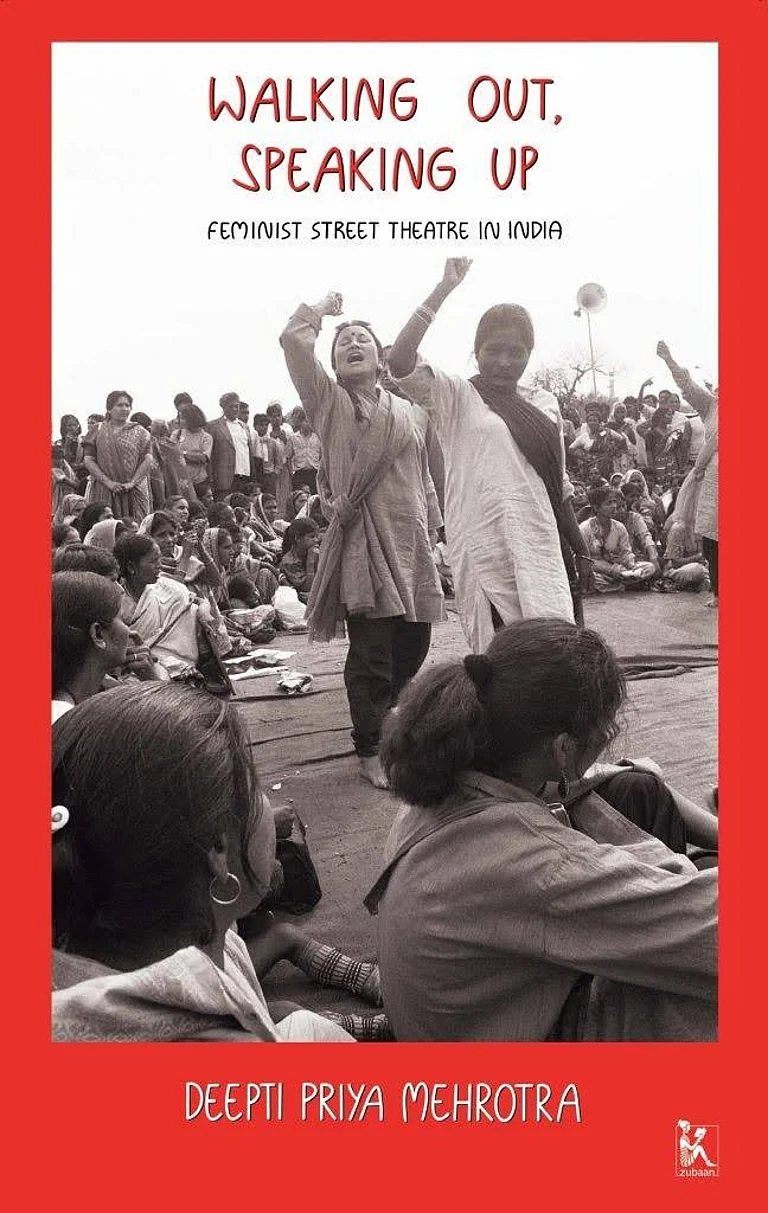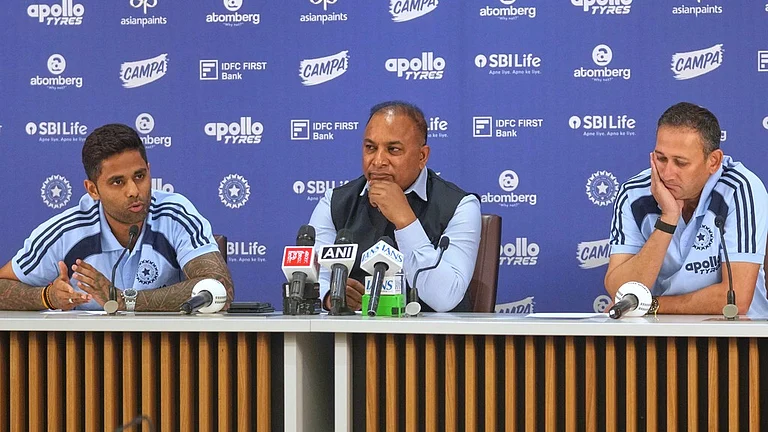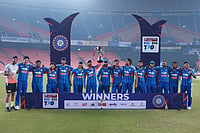It was the wrong time to get into the movie-theatre business. A few years after Krishan Mohan, the patriarch of the Delhi-based Bijli family, bought Priya Cinema in 1978, the VHS boom engulfed the country. Thanks to the late PM Rajiv Gandhi’s liberal import policies in the 1980s, VCPs and VCRs suddenly became available at affordable prices. The middle class and the rich sat in their living rooms and bedrooms and watched Bollywood and Hollywood movies on pirated and original video cassettes. Cities and small towns were soon dotted with video libraries that rented them out. Not many wanted to go to cinema halls.
At that time, theatres had single screens with five daily shows. As video cassettes wrecked the theatre business, most halls were rendered decrepit with lack of upkeep. Strangely, cinema tickets were included under the Essential Commodities Act those days, and their prices capped at Rs 10-12. Every state had its own ceiling price, and entertainment tax was as high as 100 per cent. “These factors left the entire film theatre circuit—then comprising around 10,000-odd screens nationwide—without much profits, and the halls suffered,” remembers Ajay Bijli, Krishan’s son and founder of the PVR Group. “There was no air-conditioning, neither did owners invest in upgrading sound or projection technology.”
Today, the Bijli family, which runs 176 multiplexes with 846 screens in 71 cities across India and Sri Lanka that posted a turnover of Rs 34.5 billion in 2019-20, finds itself facing yet another challenge. The pandemic shut down cinema halls for over a year.
If there is no third wave, things could normalise by year-end or early 2022, though. “But the vehicles for consumption of entertainment have changed. Audiences have greater choice and access to content. We have many platforms (OTT and live-streaming) and devices (mobile and tablet),” says Nayana, 27, Ajay’s daughter and a senior project manager at PVR.

In the early 1990s, when Ekta Kapoor, 46, the promoter of Balaji Group, was a teenager, movies and theatres were the preferred means of mass entertainment. Her father, superstar Jeetendra, epitomised this world. But the TV and cable boom had begun. Ekta, who was persuaded by her parents not to venture into acting, tried her luck with producing serials for TV Asia, a channel owned by her father’s NRI friend. But, by the time she was ready with five pilots, the channel was sold, and she desperately hawked the ideas to anyone willing a dekko. Finally, Zee agreed to produce Mano Ya Na Mano, followed by Dhun Dhamaka for the state-owned DD Metro. Then Hum Paanch happened, and ratings skyrocketed. Ekta arrived on the small screen.
More than two decades later, the Balaji Group produces movies and serials for TV and OTT platforms, and operates apps. Its content is primarily in Hindi, but also in regional languages. It straddles different genres, and is possibly a one-stop shop for viewers. The group went through several avatars and transformations, one of which happened during the economic slump between 2007 and 2010, when its serials were taken off air by Star TV channels, annual revenues fell by 50 per cent, and net profits nosedived to a tenth of their peak. Ekta survived, even as competition intensified.
The dramatic movie plot-like journeys of the Bijli and Kapoor families show the exciting changes in entertainment over the past few decades, especially since the economic reforms of 1991. Neither infrastructure—theatres with surround sound, plush seats and modern screens—nor content or distribution channels, are the same. More importantly, entrepreneurs like Ajay and Ekta underwent a slew of ups and downs, evolution and disruptions, which forced them to rework strategies regularly.
ALSO READ: When Liberalisation Freed India Inc

(R-L) Ajay Bijli, Nayana Bijli and Sanjeev Bijli of PVR.
Both had infallible faith in their ability to woo viewers and cinema-goers—an undying belief that chaos and disorder around them would inevitably give way to expansion and growth. As a college student, Ajay watched English movies at Chanakya and Archana, two theatres in Delhi whose owners revamped their properties in the late 1970s and gave a fresh lease of life to the film going experience (a similar thing happened with Sterling in Mumbai, and a few others). “The halls were hygienic, air-conditioning was good. I knew people would come to such places despite the availability of VHS cassettes. So I made up my mind to refashion Priya Cinema,” Ajay explains.
He met Delhi’s then chief minister Sheila Dixit to convince her that the cap on ticket tags and entertainment tax was unviable for theatre owners. “Fortunately, she listened. Tax was brought down to 20 per cent with a cap of Rs 5 on each ticket. This was enough to give us the encouragement to improve the cinema-going experience,” he recalls. Priya Cinema inked a joint venture with Village Roadshow, and got the know-how to improve their acoustics, install world-class fire-fighting equipment and maintain global protocols. The first multiplex PVR opened in 1997, and the packed houses propelled Ajay to “build as many multiplexes as we could”.
The logic behind the multi-screen hall is simple. India makes 1,000 films a year. On average, there are 5-6 releases a week. With three or four separate auditoriums under one roof, a theatre can show several movies every week. Viewers wouldn’t need to hop from one hall to another located across the city to watch films of their choice. The idea of multiple movie options under one roof for the customer jives with the liberalization mantra. Think of mushrooming multi- brand stores, supermarkets and malls across the country.

Elsewhere, Ekta had identified the potential of the idiot box. Post-liberalisation India was likely to witness a surge in the number of TV households with cable connections. As a child, she was hooked to serials on DD, both locally-produced ones in Hindi and US and UK imports. As private channels began beaming into homes, she knew others would soon jump into the fray. Between 2000—when Balaji Telefilms, a group company, launched its IPO, and 2007—when it had to break ties with Star TV, Ekta rode the popularity wave with her ‘K’ serials, from the 1,500 episode blockbuster Kyunki Saas Bhi Kabhi Bahu Thi to Kahaani Ghar Ghar Ki. After a period of uncertainty, she bounced back by venturing into producing movies and serials aimed at niche audiences.

1990, 2000, 2021 The transformation of Delhi’s Priya Cinema into a PVR multiplex
Like Ekta, who ventured into content in regional languages, Ajay understood the importance of regional content to cater to fragmented audiences. Since the 1990s, India has become a more heterogeneous market due to growing choices. In the sphere of content, it was actually a great way of diversifying risk. “If Bollywood has a bad year, I’d have films in Tamil, Telugu or Kannada to fall back upon,” he explains. PVR acquired the South-based Satyam multiplex chain, and spread its wings. Except for the east, PVR is now present in most regions of the country, and across neighbouring Sri Lanka.
The pandemic has forced both Ekta and Ajay to grapple with new challenges. Competition has intensified for the former, with new entrants in the OTT and serial space. Many filmmakers are opting for OTT-first releases, and are also making serials. The entertainment landscape is awash with newcomers, mid-level producers, directors and actors. For Ajay, the pressure was immense as cinema halls remained closed. Before Covid, PVR was adding 100-odd screens a year. It all collapsed during 2020 and 2021. “Since the pandemic, there’s a big pause,” he sighs.
However, he seems confident the triggers that drove people away from home videos and into multiplexes in the late 1990s will work again. He contends there is a huge mass of youngsters between ages 12 and 39, who are eager to socialize outdoors and pay Rs 200-1,000 per ticket to watch a movie on big screen, despite the proliferation in scope and quality of home-viewing. “There is a monetisation journey that begins every week, which hasn’t changed since time immemorial. Unless a movie is made exclusively for OTT, I still believe it starts with theatre releases,” says Ajay. This unrequited yearning to experience a film in the theatre will help in the recovery process.
Excited by the deluge of movies, serials, documentaries and live events on OTT and live-streaming platforms in the recent past, and especially during the pandemic, viewers are also likely to become discerning. The art and science of storytelling through cinema, as well as the narratives, “have become diverse”, feels Ajay’s daughter Nayana. Once the pandemic restrictions get lifted, people will pick and choose both content and viewing experience—theatres, OTT, live-streaming, cable—based on their newly-discovered tastes. This may help Ekta’s Balaji Group, if it can enhance the quality of production, and develop gripping plots.
While Ekta will strive to woo eyeballs with better narratives, Ajay’s multiplexes have to differentiate themselves from OTTs in terms of the experience they offer. As Nayana puts it, they have to entice people to leave their living rooms and come to theatres. “The pandemic has posed a crucial question: How do we convince audiences to choose cinema seats over sofas and beds in their homes,” she adds. In the immediate future, she believes vaccination will have an encouraging effect, by instilling confidence among movie-goers. In the medium term, though, emotions should rule. “India loves community outings. It is part of our culture to embrace and experience things together,” she explains.
To buttress this viewpoint, Ajay’s brother and Joint MD of PVR, Sanjeev, talks about his visits to the old Priya Cinema. “We used to go there on Sundays. It was like a family picnic. The window in my father’s office overlooked the main foyer. I would watch viewers buy popcorn and greasy burgers. Movies like Enter the Dragon ran for 25 weeks. Silver and Golden Jubilee celebrations were common, as people watched the same movie again and again. Films were the only popular entertainment option, apart from Chitrahaar, the weekly programme of film songs on DD that we watched at home on B/W TVs. But now, we are spoiled by choices.”
Nayana concurs. “I love fantasies, and I remember watching Lord of the Rings with my sibling at Priya Cinema. Those moments defined my childhood. Even today, the smell of popcorn takes me back to those afternoons.” Delhi-wallahs will remember the ambulance kept parked outside Priya Cinema in the pre-multiplex days. “It was more of a marketing gimmick. But a viewer did faint during a horror movie show, and the ambulance was used to rush him to hospital,” signs off Sanjeev.
(This appeared in the print edition as "The Popcorn is Still Crisp and Warm")
ALSO READ


























